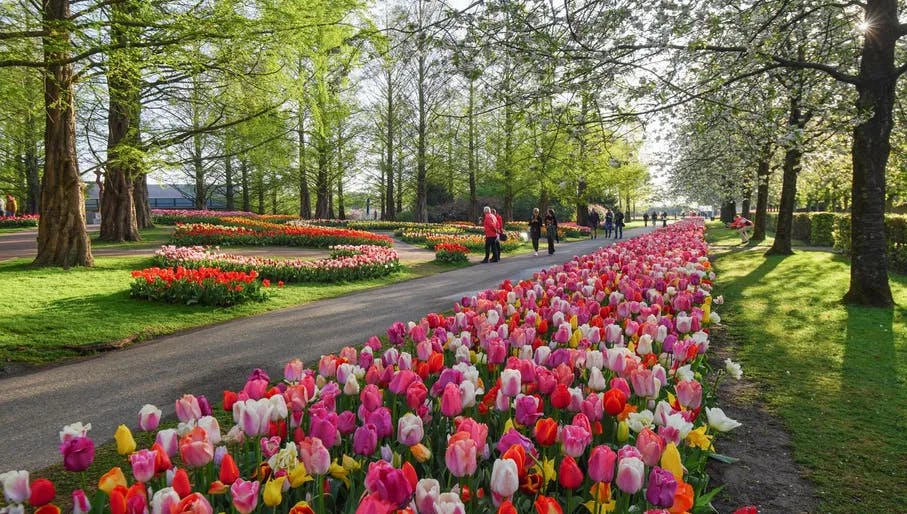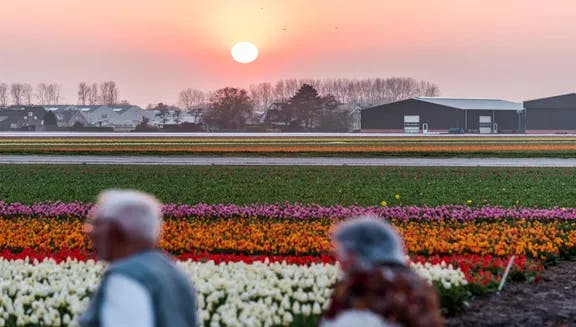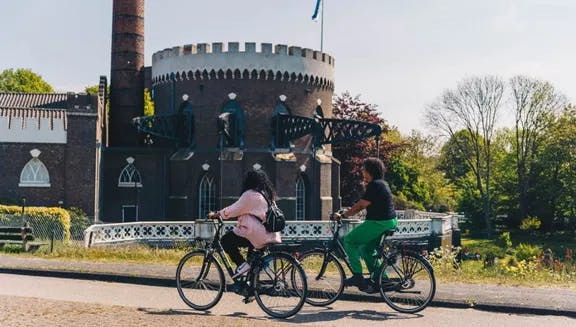
About Flowers of Amsterdam
Tulip mania, horticulture and flower fields

Stretching for around 30km between Haarlem and Leiden, the Flower Strip (called the Bollenstreek or Bulb District) is home to the world-famous Dutch tulip fields. The region grew up in the 16th and 17th centuries, partly due to the flower-buying craze known as Tulip Mania. It was not until the second half of the 19th century, when flower bulbs became more affordable, that the (large-scale) flower cultivation we see today began. Flower bulb companies sprung up all over the region, and the prosperity of growers and traders continued to increase.
Nowadays, the entire region still bursts into vivid colour every spring. The earliest flowers bloom in January, with the show lasting until late May when the late-blooming lilies finally depart. The best time to visit the flower region is from mid-March to mid-May. The best time to see tulips is mid-April, coinciding with the famous Bloemencorso (flower parade), which embarks on its 40km route to Haarlem.
One of the biggest attractions in the region is Keukenhof Gardens, the world’s most extensive flower gardens and home to more varieties of tulips than you could ever imagine. Real flower buffs should also pay a visit to De Zwarte Tulp (The Black Tulip) Museum, which examines the history of the flower region, The Flower Art Museum and the FloraHolland Flower Auction to get a proper grasp of the industrial scale of the Flower Strip. You can find numerous estates throughout the area, such as Keukenhof Castle and the Aalsmeer Historical Gardens, home to quaint tearooms and opportunities for a quiet stroll surrounded by beautiful blooms.
Heritage monuments and lakeside recreation

Mass production of flower bulbs was boosted after the steam pumping station near Katwijk came into use in 1880. Today, you can learn all about water management and how the region was reclaimed from the sea at the Cruquius Museum. Built-in 1849, this historic pumping station is a unique industrial monument. The steam-powered pumps were employed to pump parts of Haarlemmermeer dry, leaving the Dutch polder landscape behind.
For various recreational and watersports activities, the Westeinderplassen (Westeinder Lakes) offer everything from swimming to sailing lessons and boat rentals. And of course, the flat landscape is perfect for cycling, with various bike routes winding their way through forests, along waterways and past stunning agricultural areas.
Related articles

Flowers of Amsterdam Cycleseeing Route: Holland in bloom

Things to do in the Flower Strip

5 reasons to visit Keukenhof in Spring 2025

Art and culture in the Flower Strip

6 hours in the Flower Strip: bulb and flower fields

Getting to the Flower Strip

12 hours in the Flower Strip: heritage and steam power

Where to stay in the Flower Strip

Family and kids in the Flower Strip
